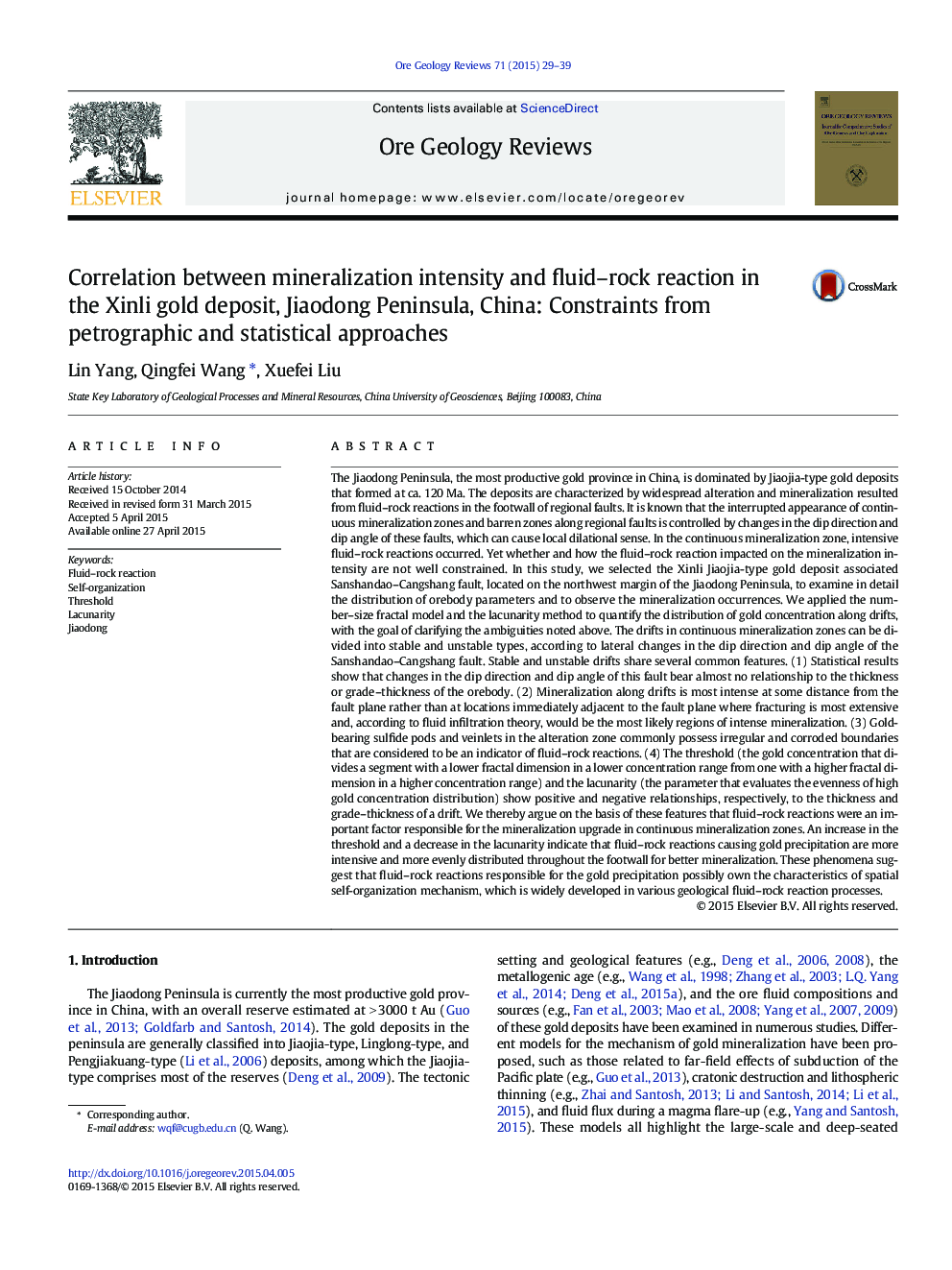| کد مقاله | کد نشریه | سال انتشار | مقاله انگلیسی | نسخه تمام متن |
|---|---|---|---|---|
| 4697008 | 1637233 | 2015 | 11 صفحه PDF | دانلود رایگان |

• Mineralization intensity largely controlled by fluid–rock reaction.
• Fluid–rock reaction driven by spatial self-organization mechanism.
• These reactions were intensified and evenly distributed in the footwall.
The Jiaodong Peninsula, the most productive gold province in China, is dominated by Jiaojia-type gold deposits that formed at ca. 120 Ma. The deposits are characterized by widespread alteration and mineralization resulted from fluid–rock reactions in the footwall of regional faults. It is known that the interrupted appearance of continuous mineralization zones and barren zones along regional faults is controlled by changes in the dip direction and dip angle of these faults, which can cause local dilational sense. In the continuous mineralization zone, intensive fluid–rock reactions occurred. Yet whether and how the fluid–rock reaction impacted on the mineralization intensity are not well constrained. In this study, we selected the Xinli Jiaojia-type gold deposit associated Sanshandao–Cangshang fault, located on the northwest margin of the Jiaodong Peninsula, to examine in detail the distribution of orebody parameters and to observe the mineralization occurrences. We applied the number–size fractal model and the lacunarity method to quantify the distribution of gold concentration along drifts, with the goal of clarifying the ambiguities noted above. The drifts in continuous mineralization zones can be divided into stable and unstable types, according to lateral changes in the dip direction and dip angle of the Sanshandao–Cangshang fault. Stable and unstable drifts share several common features. (1) Statistical results show that changes in the dip direction and dip angle of this fault bear almost no relationship to the thickness or grade–thickness of the orebody. (2) Mineralization along drifts is most intense at some distance from the fault plane rather than at locations immediately adjacent to the fault plane where fracturing is most extensive and, according to fluid infiltration theory, would be the most likely regions of intense mineralization. (3) Gold-bearing sulfide pods and veinlets in the alteration zone commonly possess irregular and corroded boundaries that are considered to be an indicator of fluid–rock reactions. (4) The threshold (the gold concentration that divides a segment with a lower fractal dimension in a lower concentration range from one with a higher fractal dimension in a higher concentration range) and the lacunarity (the parameter that evaluates the evenness of high gold concentration distribution) show positive and negative relationships, respectively, to the thickness and grade–thickness of a drift. We thereby argue on the basis of these features that fluid–rock reactions were an important factor responsible for the mineralization upgrade in continuous mineralization zones. An increase in the threshold and a decrease in the lacunarity indicate that fluid–rock reactions causing gold precipitation are more intensive and more evenly distributed throughout the footwall for better mineralization. These phenomena suggest that fluid–rock reactions responsible for the gold precipitation possibly own the characteristics of spatial self-organization mechanism, which is widely developed in various geological fluid–rock reaction processes.
Figure optionsDownload as PowerPoint slide
Journal: Ore Geology Reviews - Volume 71, December 2015, Pages 29–39